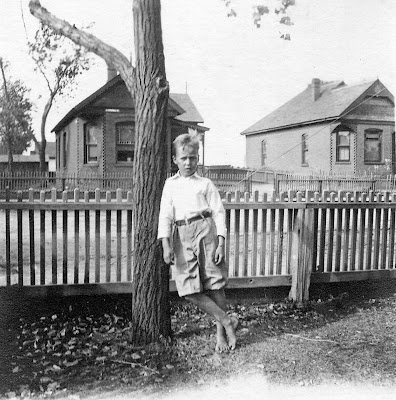 |
| Corinth, AE 21 6.24grams. Marcus Aurelius (161–180 AD). |
A coin with Melikertes
Reconstituted as a Roman Colony, Corinth once again administered the very ancient Games at Isthmia. That is why (if for no other reason) it issued coins showing the boy Melikertes, Ino's child by Athamas, rescued and brought to shore by a dolphin. Trees are hard to specify on coins the size of an American nickel, 5¢, but there is good reason to call it a pine, apart from its being bristly (and pines today do grow along the shore of the Gulf of Corinth). The CLI preserved on this specimen stands for Colonia Laus Iulia (COR being obliterated on this one). Other specimens also adequately preserve Marcus Aurelius's name, but his portrait would be recognizable to cognoscenti anyway.
For his wonderful book,
Münzen und antike Mythologie: Reise in ein fernes Land (Obernforf am Neckar, 2011. ISBN 978-3-00-03-4813-6), pp. 47-48, Hans-Joachim Hoeft illustrates a better preserved specimen, and summarizes the myths (for, from different sources, we find perhaps a different tradition calling Melikertes Palaimon and designating Ino as Leucothea, surely implying a cult). Between the universal attraction of the dolphin-rescue motif and the idea of Leucothea (and the limited sources), the stories have given rise to imaginative interpretations, fiction (Robert Graves's
The White Goddess still read, evidently, being in print), and even a movie with the title of this Post: the blue Aegean and its touristic culture being irresistible to film makers (1967, with Sophia Loren).
So this is one of the subjects that persons not deeply committed to numismatics do desire, and, though in several issues it is not inherently rare at Corinth, I did not intend (or hope to find) to get one, not least because I had to be sure that it was not a smuggled coin. Since they tend to have been "conserved" excessively (one listed in the
RPC files at the Ashmolean specified as falsified in the effort to make it salable), I could not obtain even a near-perfect specimen, either conscientiously or financially. And it had to come from a seller whom I could trust absolutely to sell only what is 'provenanced'. This one, with its scouring and painting behind the portrait and in front of the dolphin (which may betray bronze disease) and its mangled legends, would not be acceptable to most collectors. To illustrate the myth, however, it suffices, so I am happy to share it here. Its best home is with an art historian who loves portraits and knows mythology and couldn't care less for bragging rights or resale value, especially seeing that the Marcus Aurelius with slightly parted lips is very sympathetic, though his laurel wreath is largely destroyed, and his eye must be imagined.
When we read myths with names like Melikertes (though even M. L. West, in
The East Face of Helicon, Oxford, 1997 [pb rpt 2003] agrees that, despite the identical series of consonants, we cannot assert that 'Melikertes' is the same as Phoenician 'Melqart', and with variants, including that name Leucothea, whom the reader is assumed to know of) it is very likely that we are dealing with a very ancient one. In such a case, the sequence of wives and different children for Athamas has nothing to do with sexual psychology, though it obliges later authors to rationalize it (I think of that classic of my childhood,
Helen's Babies, 1876, by John Habberton, in which the little boys adapt and rationalize the Bible stories whose characters and milieu are beyond the ken of three- and six-year-olds—there is a Silent movie with Clara Bow in which the little boys are played by little girls, and the Bible stories in baby talk are omitted). Like many other pre-Drama elements of the Theban Cycle, this story is, I should think, from the Late Bronze Age, if not even earlier.
In any case, for Corinthians of the Roman Imperial period, Melikertes is the hero in whose honor the Isthmian games were held, and the pine tree alludes to the crowns of
feuilles de pin (see the libretto of Offenbach's
La Belle Helène, which shows that Halévy remembered the authors he had read in school, probably Plutarch (
Symposiacs, Book V, Question III, which is more fun to read than most of Plutarch's
Lives), though the sources as a whole are uncertain whether Isthmia had pine crowns first (as Oscar Broneer argued) or celery, which Nemea certainly had later. To me the coin makes plain that the Corinthians believed that the dolphin delivered Melikertes (dead or alive) at the Isthmus and laid him at the foot of the Pine Tree.
If you can't read any German, I recommend going to H. J. Rose,
Handbook of Greek Mythology, 4th ed., 1950, though it is so superior to any of the others that even its PB editions, even its Kindle (!), is expensive after all these years. You can even safely use Wikipedia; just not what is other than Wikipedia itself. If, however, you desire to read Robert Graves, I'd recommend reading his fiction as such; he was a wonderful storyteller, but his two-volume
Greek Myths (an old Pelican PB) is much worse than useless as a work of reference. The University of Chicago references that Hoeft supplies, too, are excellent, of course, since Isthmia is their excavation and a good one. And you can find H. J. Rose in almost any library, also, perhaps, in used-book stores. Or just take what the coin says implicitly: it is ancient, it is Corinth, it shows the dolphin version of the Melikertes story, and it shows the pine tree, too. Everyone knew about the differing crowns of the Greek games. St. Paul mentions them in 1 Corinthians 9: 25, but he is not interested in what they were made of or what they looked like; he cites them for their perishability.




















